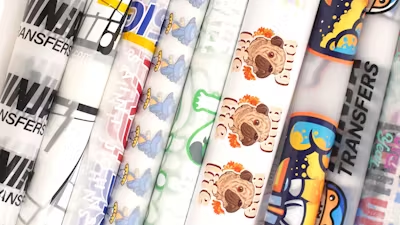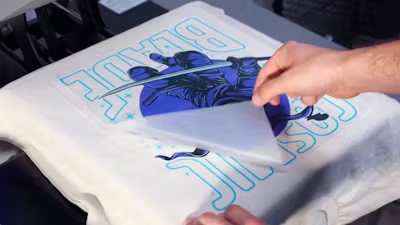To get the best durability and longevity from a DTF transfer, it's important to consider several factors. By following this DTF Transfer durability guide, your pressed designs will never lose their vibrant color or crack over time.
It’s no secret that direct-to-film transfers have become extremely popular recently, largely in part due to their versatility and durability when it comes to textile printing in custom apparel and customization.
To get the best possible durability for your direct-to-film transfers, there are a few things that you should consider, including storage, washing instructions, press method, and other aftercare.
When it comes to enhancing your durability for the DTF transfer, it comes down to even starting with selecting a high-quality fabric, something that can withstand the heat from a heat press like cotton, polyester, blends, and even specialty materials like denim as long as it can take the heat from a heat press, you can get the direct to film transfers on them.
Especially when it comes to detail in the design, you want to make sure you have the highest res artwork as possible to ensure that it looks crisp when printed but remains looking sharp throughout the duration of the shirt.
If you are printing your own DTF transfers with our line of consumables, it’s important to pre-treat your transfer with the proper adhesive powder and ensure that it is cured properly to ensure long-lasting adhesion. If you’re ordering the transfers directly from us here at Ninja Transfers, you don’t even need to worry about that because we handle every step of the way from there.
With all of that information out of the way, we’re going to press three different materials: cotton, polyester, and cotton/poly blend.
The application instructions do not vary much for the more standard fabrics that you want to work with, usually around 315 to 320 for 15 seconds. For a supersensitive material like nylon, you can drop the temperature down to as low as 275 with our low-temperature melt adhesive.
In our example, we’re showing three different transfers with three different materials, with the temperature for this example being 315 for 15 seconds. The application process is our standard DTF transfer pressing instructions with a heat press, but what we really want to stress for durability purposes is the importance of the second press that we recommend.
This will improve the durability of your transfer and will really incorporate the design further into the shirt meaning you get a much more comfortable wear and a much better look in general.
With the second press, you can use either the protective guard sheet or the parchment paper included in your order to provide an extra layer of protection to your exposed garment.
Washing Instructions For DTF Transfers
We recommend waiting at least 24 hours after pressing to wash your DTF garments to ensure the transfer is completely adhered to the material and the adhesive is fully cured and locked in. This will ensure that it is durable in the long term.
Before washing, you should flip your garment inside out to protect the DTF transfer. While this isn’t completely necessary, we recommend it to maximize longevity. Shirts with DTF transfers can be washed normally, but this is just to keep in mind if you’re trying to keep your shirt vibrant and without cracks for as long as possible.
Add a light detergent and avoid bleach, as this can degrade the print. Once washed, we can put the DTF transfers into the dryer. Keep the garments inside and put them on a tumble dry on low heat (or set out to hang dry).
Can I Stretch My DTF Transfers?
Yes, you can stretch the DTF transfers when they’ve been adhered to the garment, again we recommend leaving for 24 hours after transfer.
When stretching the garment, you will see that no cracks appear and the material stays flexible even after washing and drying.
Everything will stay intact, and the colors will remain vibrant.
By following these tips and tricks for your DTF durability, you will never have to worry about accidentally damaging your DTF transfers ever again.







































